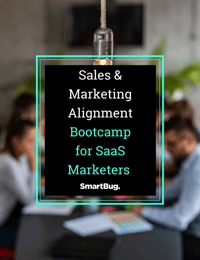
By Mark Ryba
These days, it would be surprising to find someone unfamiliar with software as a service (SaaS). Although SaaS has changed the marketing game in many ways through its subscription approach that provides customer service, tech support, and even upgrade options, there are a few hiccups in the method.
For one thing, the majority of marketers and teams don’t just use one type of software to function. Instead, they use several different kinds of software, a few plugins, and a widget here and there, until they have multiple options that create a functional solution.
Users of most software expect more—they want faster solutions and feedback, as well as access to everything needed to solve their problems. Although the solution to these expectations might be to add more tools to existing software, this is a costly option. Yet even if a company incorporated every necessary piece of software, a separate platform structure is still subject to data loss, misalignment, and disjointed information.
So what’s the solution for creating a more frictionless experience? The HubSpot integration platform as a service (iPaaS). An iPaaS connects disjointed systems on a single platform to deliver a unified solution. By serving as the communication point between multiple systems, integration and data-sharing is made easier and more seamless.
This blog post provides an overview of iPaaS, its benefits, and the best practices when using it as a solution.
How Does iPaaS Work?
According to Gartner, iPaaS is “a suite of cloud services enabling development, execution, and governance of integration flows connecting any combination of on-premises and cloud-based processes, services, applications, and data within individual or across multiple organizations.” A few examples of companies that provide iPaaS include Microsoft, IBM, and SnapLogic, all of which incorporate users’ needs to create integration service platforms.
Software companies rely on iPaaS to supply the necessary infrastructure to create connections and deploy software applications in the cloud.
To start, the software company provides parameters for the connections that will occur on the platform. The parameters might include an application programming interface (API), prebuilt connectors, and more. Once the parameters are established, the iPaaS develops a central ecosystem of software that can be viewed and managed. In addition, the data, infrastructure, and operations can be modified to allow users to customize their product, provide solutions, and share information to their market.
What Are the Benefits of iPaaS?
The rise of SaaS over the past two decades created a need for more integrated systems in the digital ecosystem. In response, iPaaS arose as the answer for quick, seamless cloud-based solutions.
For marketers, or other users of iPaaS, the platform provides a solution to the disparate tools issue. In other words, iPaaS brings email providers, document sharing, marketing software, and more into a single platform to increase internal efficiency, improve workflows, and provide a better customer experience.
Here are a few of the main benefits of iPaaS for marketers.
Eliminate Silos
Companies that use a smaller number of software platforms benefit from third-party integrations because there are few connections to make. However, according to HubSpot, marketers on average use 12 tools—and some as many as 31—to manage campaigns and data. With this many tools, integrations can become more complex and scattered, creating unnecessary disorganization, hidden information, and difficult-to-access data that prevents marketers from gaining critical insights.
Real-Time Processing
Rather than sitting through delays while accessing important information between two disparate softwares, iPaaS allows for real-time data sharing and processing, thereby providing a quick solution.
Increased Efficiency
With its centralized system that manages all parties involved, iPaaS eliminates confusion, data loss, and inconsistencies.
Centralized Management
Because iPaaS has a single view, all connections are managed across the platform. Managers and teams aren’t required to manage different integrations, but instead they can access them from a single console.
Multitenancy
Just like every person on a call requires their own phone connection, each time a user accesses a software, an “instance” occurs. To eliminate overload, reduce costs, and increase speed of use, iPaaS provides shared instances among users.
Improved Security and Compliance
The cloud is susceptible to security threats, just like any presence on the internet. The centralized platform of iPaaS makes it easier to detect fraud, create alerts for intrusions, and respond adequately. Additionally, the platform implements changes in a single environment, making regulation compliance simple.
Best Practices for iPaaS Integration
iPaaS is an excellent solution for integrating your tech ecosystem and enhancing the flow of data. Before you implement an iPaaS, make a data integration plan to ensure a seamless data sync. To do so, follow these best practices:
1. Decide on which goals you want to achieve with data integration.
For example, some companies might benefit from integrating business data, creating a wider view of business operations to build better analytics reports. For others, integrating customer data from different applications gives a more holistic view of the customer base.
2. Decide what data will be integrated.
With data integration goals set, marketers have a clearer idea of the kind of data that needs to be integrated. Keep in mind that not every iPaaS can integrate every object of your apps. Determining the kind of data you want to integrate will help you decide which iPaaS to use.
3. Find out where your data lives.
By finding out which application you store your information in, you will determine which tools to integrate with iPaaS. For example, syncing customer data will require you to know which applications are collecting data across your business.
4. Figure out how the data should flow.
Finally, you will need to know how the data should flow between tools. Most marketers select one of two options:
- A one-way, trigger-action data push
- A real-time, two-way synchronization
Learn More About HubSpot Operations Hub with SmartBug Media
Interested in learning more, beyond the HubSpot integration platform as a service? At SmartBug Media®, we are dedicated to helping you grow your business through expert insights into digital marketing, marketing automation, and more.
For SaaS marketers, check out our bootcamp, Sales and Marketing Bootcamp for SaaS Marketers.

About the author
Mark Ryba was formerly a Senior Developer at SmartBug who is passionate about creating incredible online experiences. When not experimenting with the latest front-end JavaScript frameworks, pushing CSS to new limits, or creating custom full-stack application solutions, you’ll find him with a camera in his hand, welding in the garage, or practicing to be the next World Champion of Darts. Read more articles by Mark Ryba.








